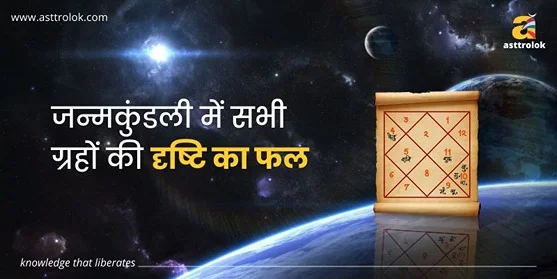
Know more about What is Ashtanga Yoga? Are you looking for the best astrologer online? Get an online astrology consultation with a professional astrologer to find out the answers to all of your questions.
Historical Background
Tirumalai Krishnamacharya and his pupil, K. Pattabhi Jois modernised Ashtanga from Mysore. This yoga was traditionally done separately or with the guru's help. Once a pupil is physically and psychologically strong, they are offered more difficult asanas. Pattabhi Jois taught Ashtanga Yoga till 2009. He classified Ashtanga Yoga as fundamental, moderate, advanced A, B, etc.
The 8 Limbs of Yoga
Maharishi Patanjali wrote Yoga Sutras, a Sanskrit book on yoga's theory and methodology. Sage Patanjali defined eight yoga limbs:
- Yamas
Yamas are moral principles in Hinduism and Yoga (self-restraint). Yamas are lists of don'ts (don'ts) in life. The yoga sutra has five Yamas:
- Ahimsa signifies nonviolence or causing no damage to living beings through words, acts, and ideas.
- Satya implies truthfulness. In the yoga tradition, Satya means being honest in what you say, do, and think.
- Sanskrit meaning "not stealing" Asteya is a Hindu practice of not stealing others' property through words, ideas, and acts.
- Brahmacharya is the discipline of abstinence and meditation. Non-greediness is aparigraha. It means not injuring people out of greed.
- Niyamas
Positive duties or observances. Niyamas are ethical habits and manners in yogic and Vedic cultures that promote health and spiritual development. Niyamas include:
- Shaucha means mental, verbal, and physical purity.
- Santosh implies contentment.
- Tapas leads to moksha (freedom) It demands seclusion, meditation, and self-discipline.
- Svadhyaya means self-examination of emotions and thoughts.
- Ishvarapranidhana means to consecrate, surrender, and encounter the greatest lord.
- Asanas
Asanas are yoga postures used for meditation, hatha yoga, and contemporary yoga. Patanjali defines asanas as steady, agreeable body positions in the Yoga Sutra. Asanas are meditation positions that allow long, steady sitting. Patanjali listed 12 asanas:
- Padmasana
- Virasana
- Bhadrasana
- Svastikaasna
- Dandasana
- Rasayana
- Paryankasana
- Krauncha-nishadasana
- Hastanishadasana
- Ushtranishadasana
- Samasansthanasana
- Sukhasana
Read Also:- Are zodiac signs related to elements?
- Pranayama
Prana represents breath or life-giving power in Sanskrit, and Ayama signifies control or restraint. Pranayama involves breathing exercises. Patanjali also recommended Pranayama for focus.
- Pratyahara
Two Sanskrit terms make up Pratyahara. Prati means "away" and ahara means "externally eaten" Together, food and sense withdrawal. It links yoga's outward and internal limbs. Controlling the senses assists with Dharana, Dhyana, and Samadhi's higher practices.
- Dharana
Dharana denotes focus or remaining steady. Meditation is focusing on one thing, such as breathing, mantra, object, or idea, so the mind doesn't wander. Dharana is the beginning of meditation and intense focus.
- Dhyana
Dhyana refers to brooding and meditation. It's Dharana's singular concentration. It could be philosophy, items, breath, chant, or deity. Dhyana is uninterrupted thinking flow.
- Samadhi
Samadhi, the final step of yoga, involves merging with meditation. In Samadhi, a yoga practitioner's mind merges with whatever they're pondering about. Samadhi has two processes:
Samprajnata Samadhi is performed with things. Savitarka (deliberate) and Savichara are included (reflective). Up until it crosses the regular state of Dhyana, the mind in savitarka is fixed on the object and muses on ideas associated with it. When practicing Savichara, the mind concentrates on the subtle aspects of meditation, such as the senses, chakras, and ideas.
Asamprajnata Samadhi is the final step of yoga. It is a state in which the person joins with the Absolute Reality of the cosmos and their mind remains empty and thoughtless. Asamprajnata Samadi leads to enlightenment through object-less meditation.
- Ashtanga poses:- Pattabhi Jois established Ashtanga Vinyasa Yoga as the current form of classical yoga, with primary, medium, advanced A, B, and more stages. All phases include simple to complex bodily positions. Standing, sitting, and ending are the three main positions.
- Standing poses:- These include Samasthiti, Surya Namaskar, Padangusthasana, Pada Hastasana, Utthita Trikonasana, Parivritta Trikonasana, and Utthita Parshvakonasana.
- Sitting postures:-Dandasana, Paschimottanasana, Purvatanasana, and Ardha Baddha Padma Paschimottanasana are sitting postures.
- Concluding Posture:-Salamba Sarvangasana, Halasana, Karnapidasana, Urdhva Padmasana, Pindasana, and Matsyasana.
Mysore ashtanga yoga
Ashtanga Yoga is often termed Mysore style Ashtanga because Pattabhi introduced it from Mysore.
- Yoga begins with easy primary series postures.
- You practice the same asanas all week.
- The yoga instructor will guide you, but you must master the asanas.
- Once you finish primary, you'll move on to intermediate, etc.
Learn astrology courses online from the best astrologer in India. Learn about different aspects of astrology, like astrology readings, prediction, and more. Free astrology classes are available as well. Further, explore numerology course, palmistry course, Vastu course, medical astrology with astrology certification. Register now.
Read Also:- What Vastu Mistakes May Cause Misfortune In Life?
Comments (0)
Categories
Recent posts


जन्मकुंडली में ...
30 Aug 2023
Importance of Bhakoot Koota in Kundali ...
30 Aug 2023

.webp)














